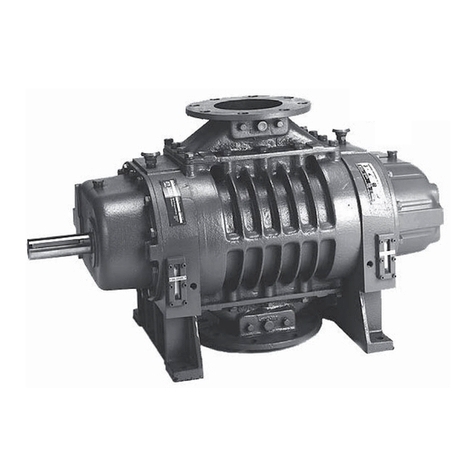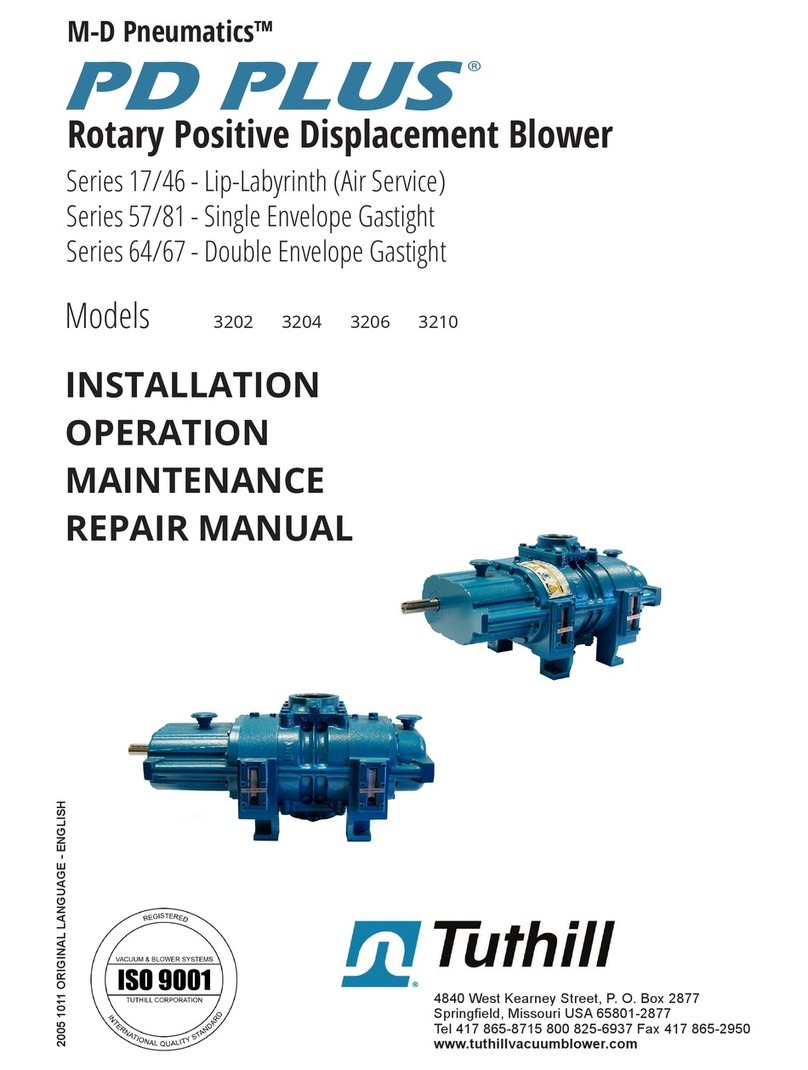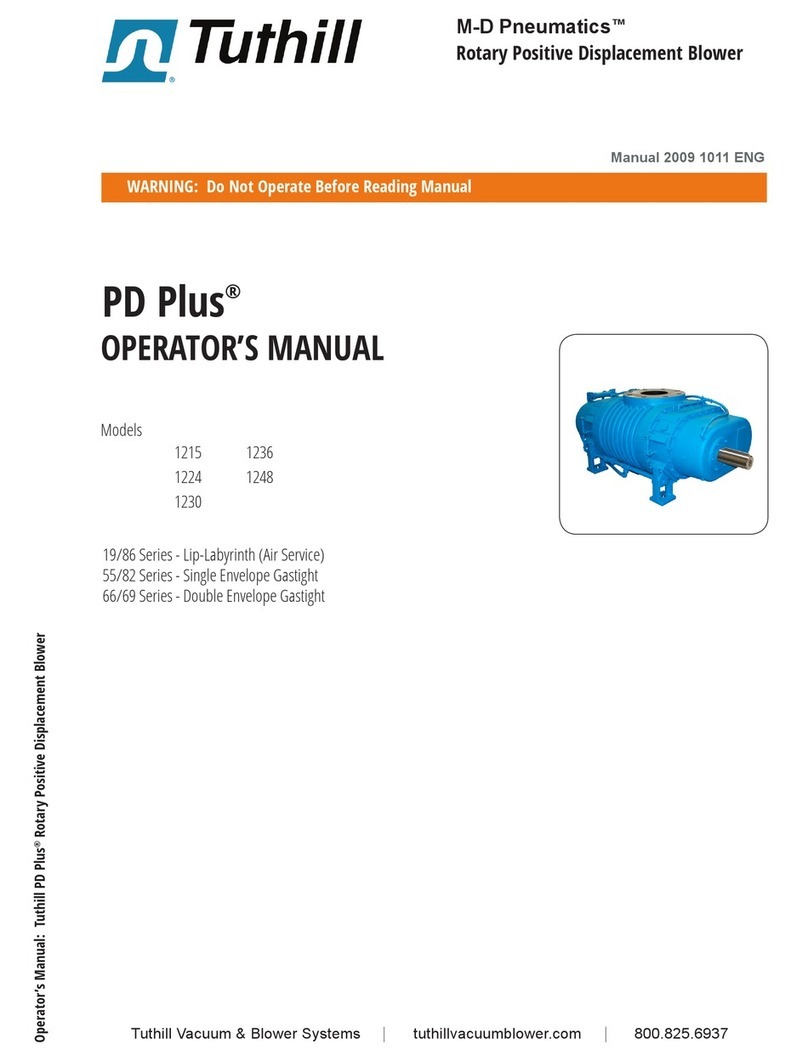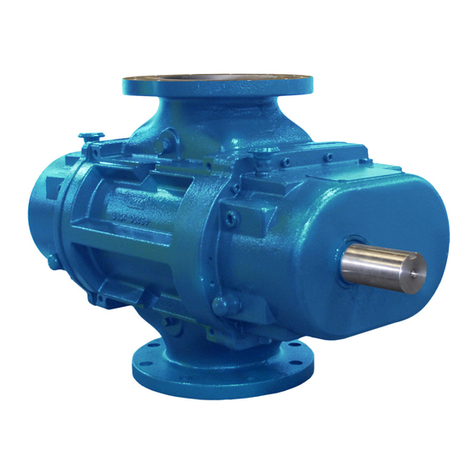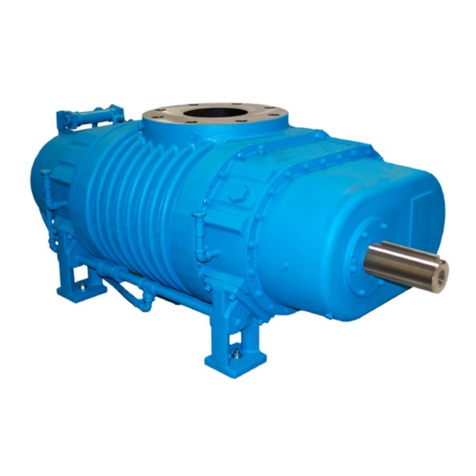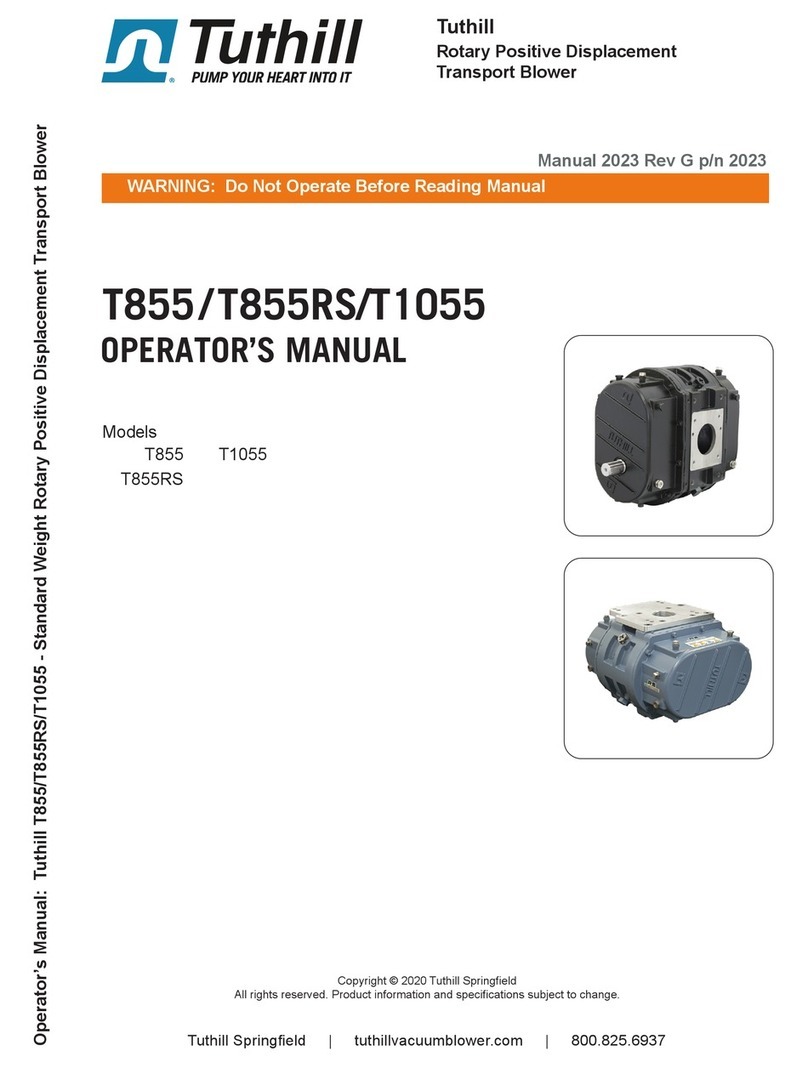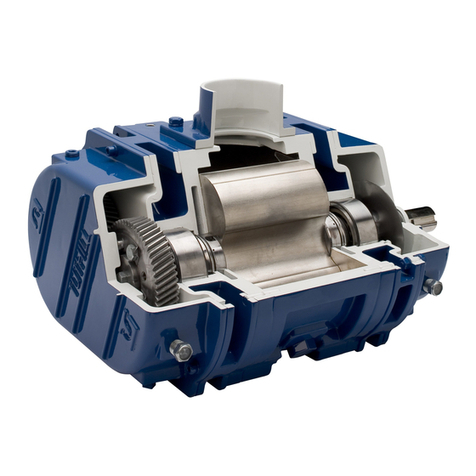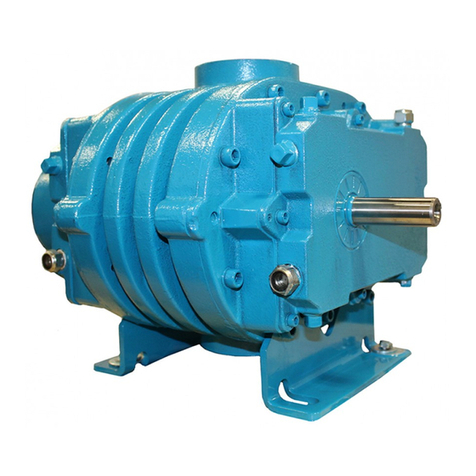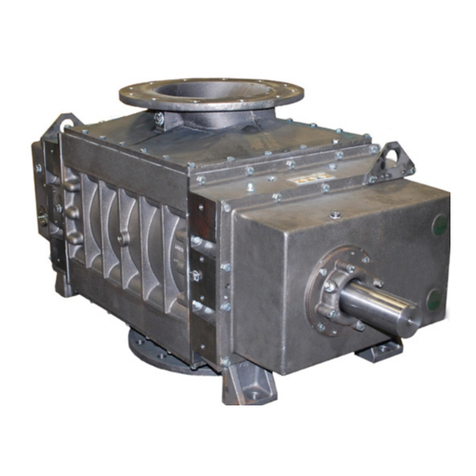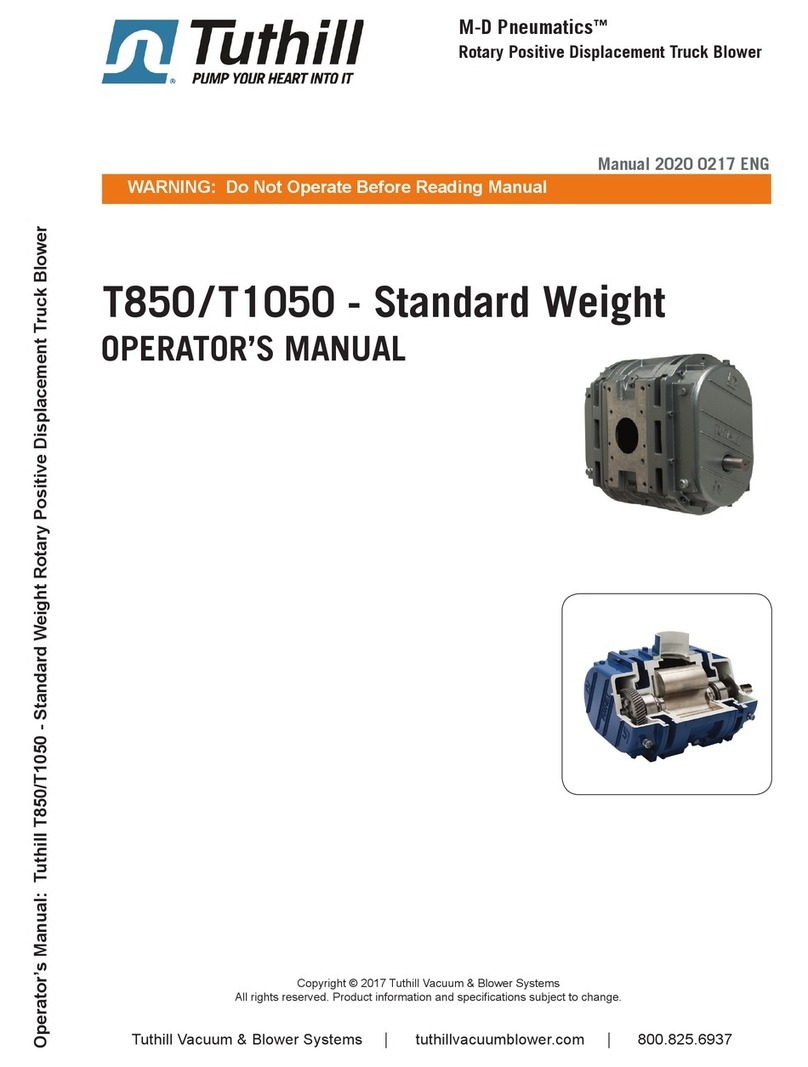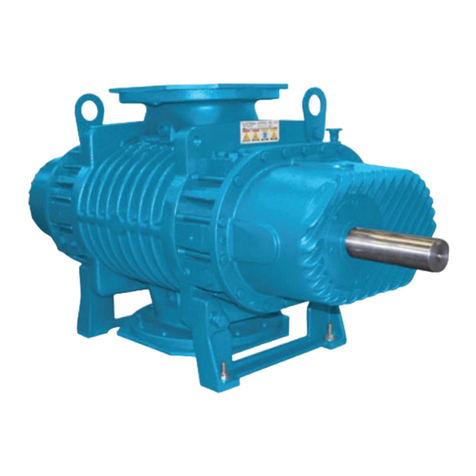
Operator’s Manual 2023 Rev C p/n 2023 3
02
Safety
WARNING
Hearing
Protection
Required
WARNING
Keep body and
clothing away from
machine openings.
CAUTION
Do not
touch hot
surfaces.
WARNING
Keep body
and clothing away
from drive shaft.
SAFETY INSTRUCTIONS
1. Do not operate before reading the enclosed
instruction manual.
2. Use adequate protection, warning and safety
equipment necessary to protect against
hazards involved in installation and operation
of this equipment.
The above safety instruction tags were
attached to your unit prior to shipment. Do not
remove, paint over or obscure in any manner.
Failure to heed these warnings could result in
serious bodily injury to the personnel operating
and maintaining this equipment.
WARNING
!
• Keep hands and clothing away from
rotating machinery, inlet and discharge
openings.
• Blower and drive mounting bolts must be
secured.
• Drive belts and coupling guards must be
in place.
• Noise level may require ear protection.
• Blower heat can cause burns if touched.
Safety Precautions
For equipment covered specically or indirectly
in this operator’s manual, it is important that all
personnel observe safety precautions to minimize
the chances of injury. Among many considerations,
the following should particularly be noted:
• Rotating shafts can be dangerous. You can
snag clothes, skin, hair, hands, etc. This can
cause serious injury or death.
• Do not work under the vehicle while the engine
is running.
• Do not work on a shaft (with or without a guard)
while the engine is running.
• Do not engage or disengage driven equipment
by hand from under the vehicle while the engine
is running.
• In order to avoid becoming entangled, install the
power take off and/or shaft behind the frame rail,
tanks, battery box, etc.
• If power take off and/or shaft are still exposed
after installation, install a guard.
• Install a support strap when servicing a drive
shaft to prevent personal injury.
A SERIOUS OR FATAL INJURY CAN OCCUR:
• If you lack proper training
• If you fail to follow proper procedures
• If you do not use proper tools and safety
equipment
• If you assemble drive line components
improperly
• If you use incompatible drive line components
• If you use worn out or damaged drive line
components
• If you use drive line components in a
non‑approved application
